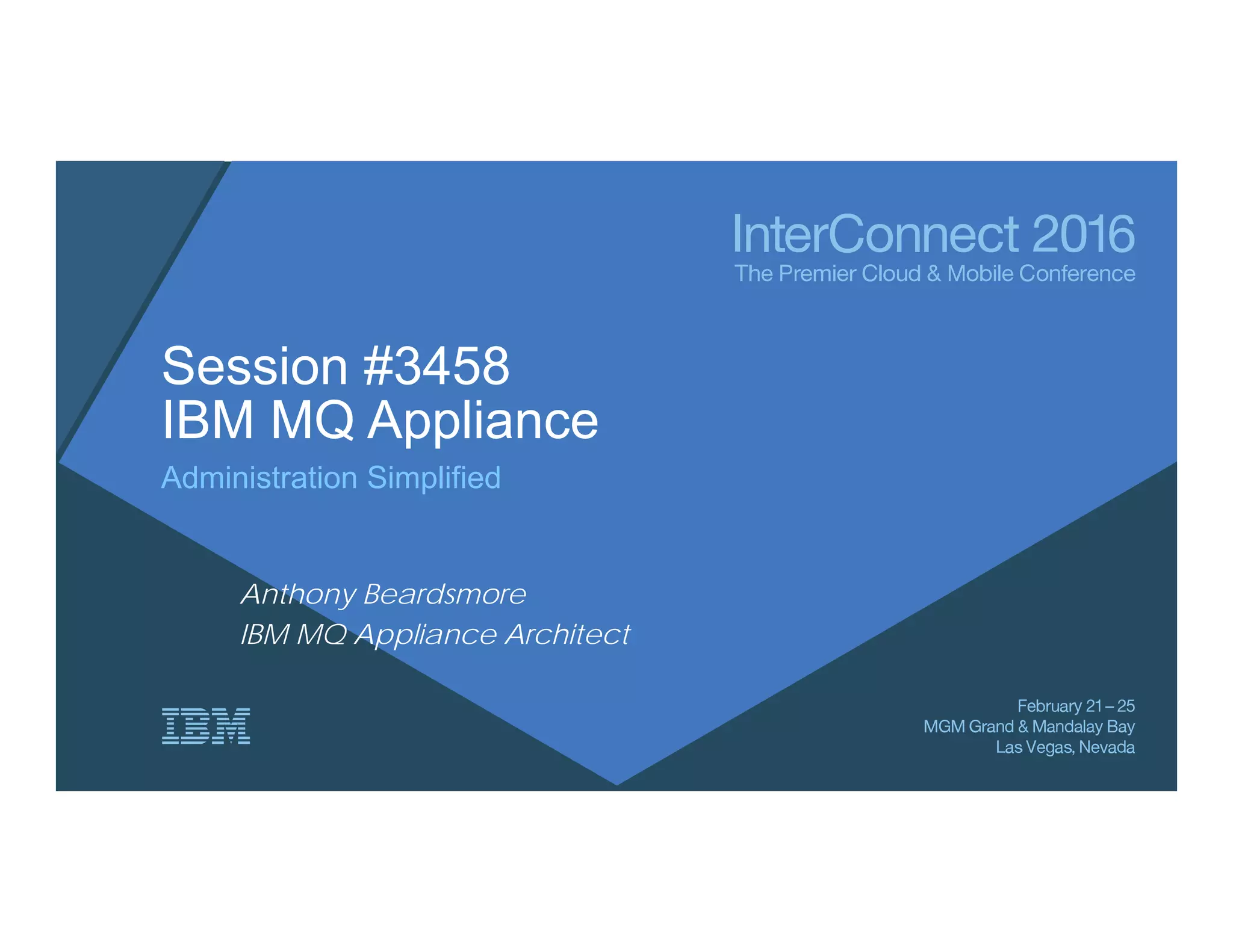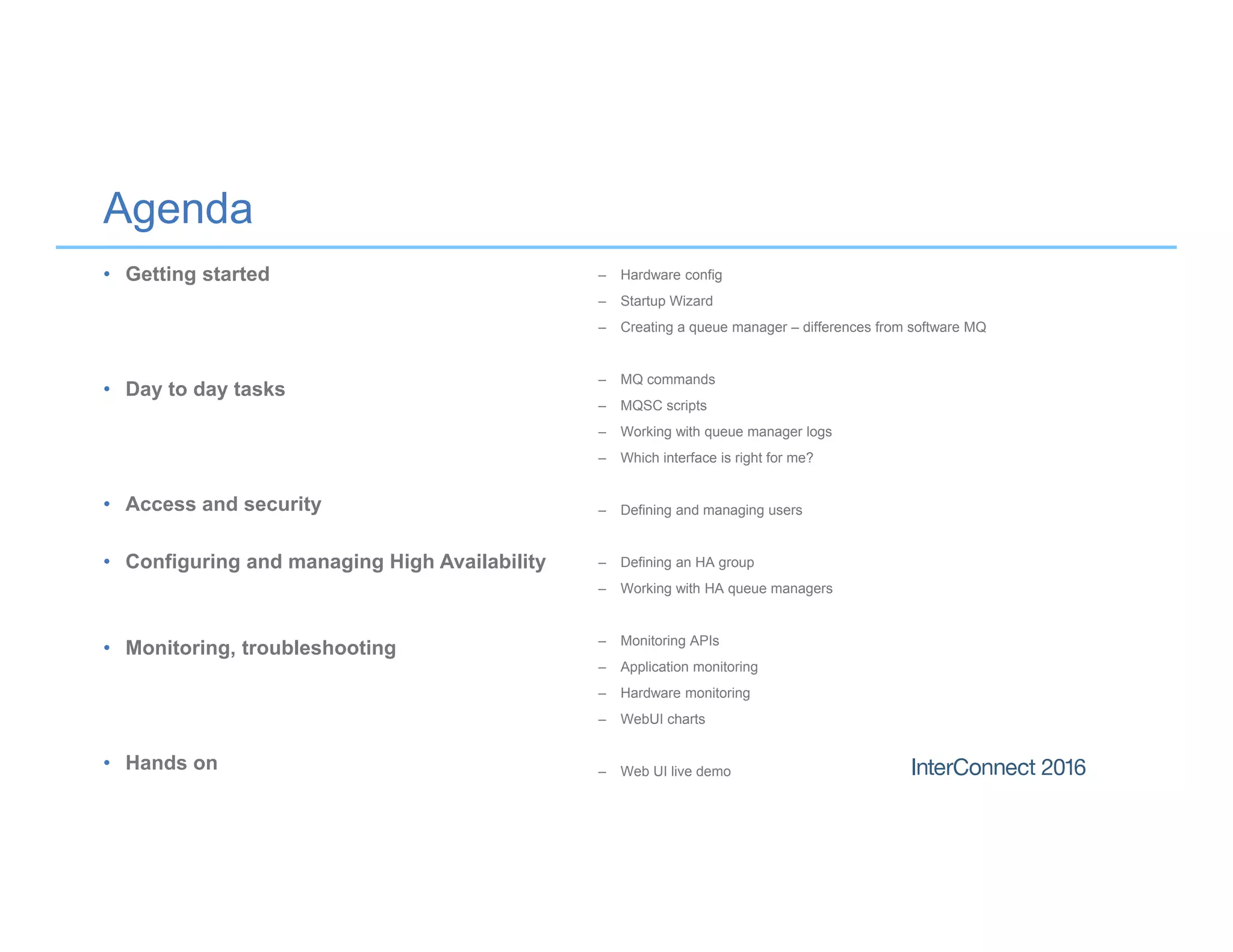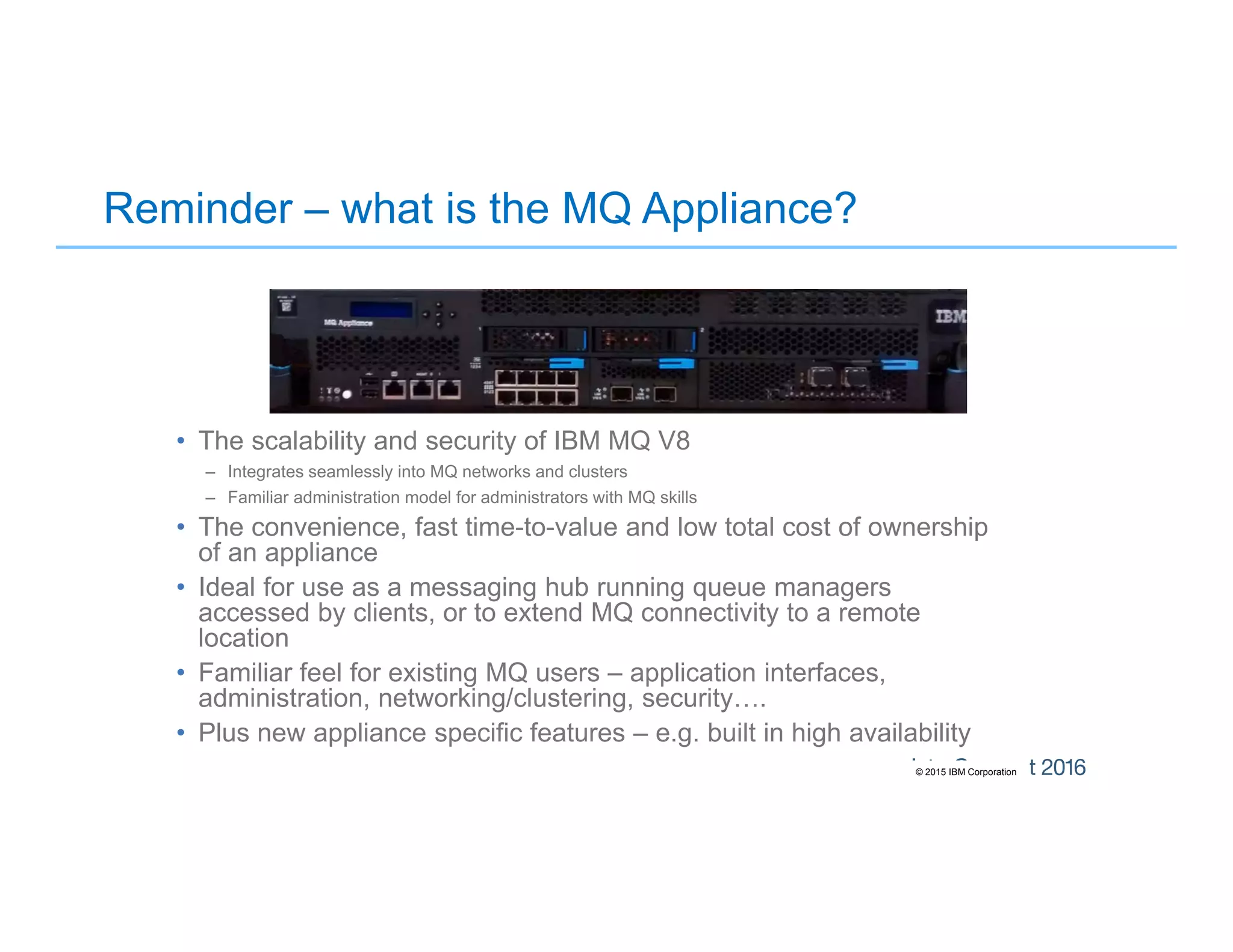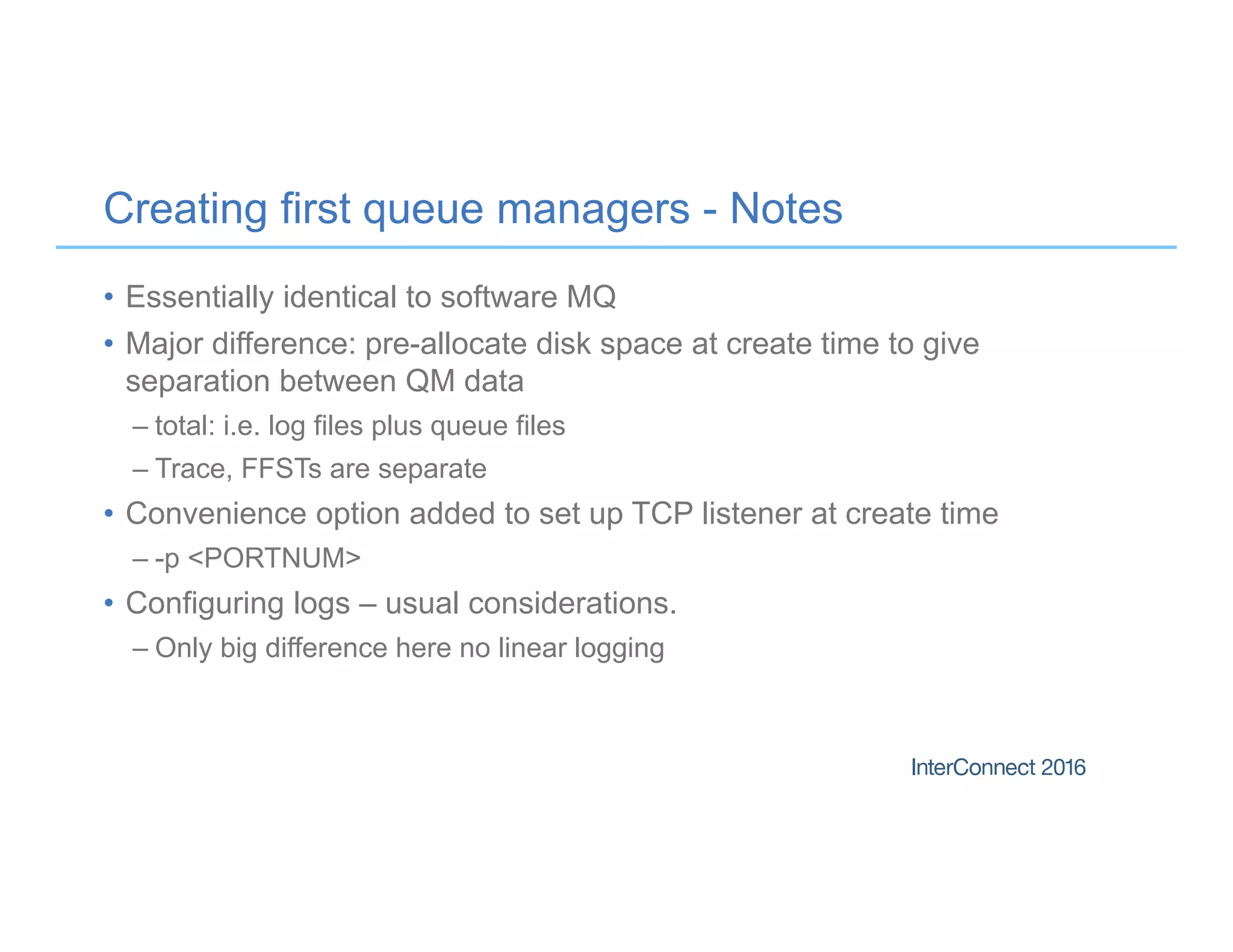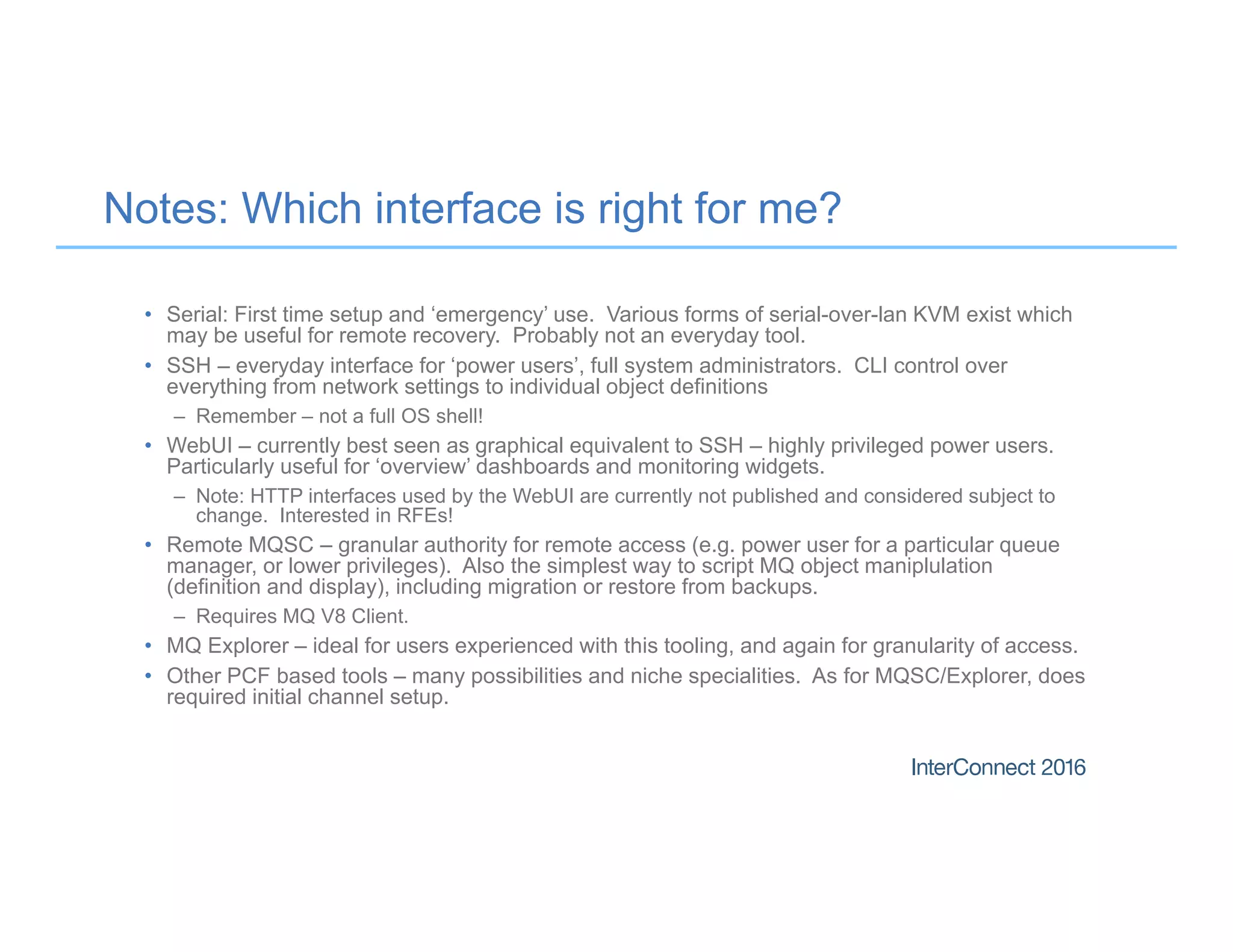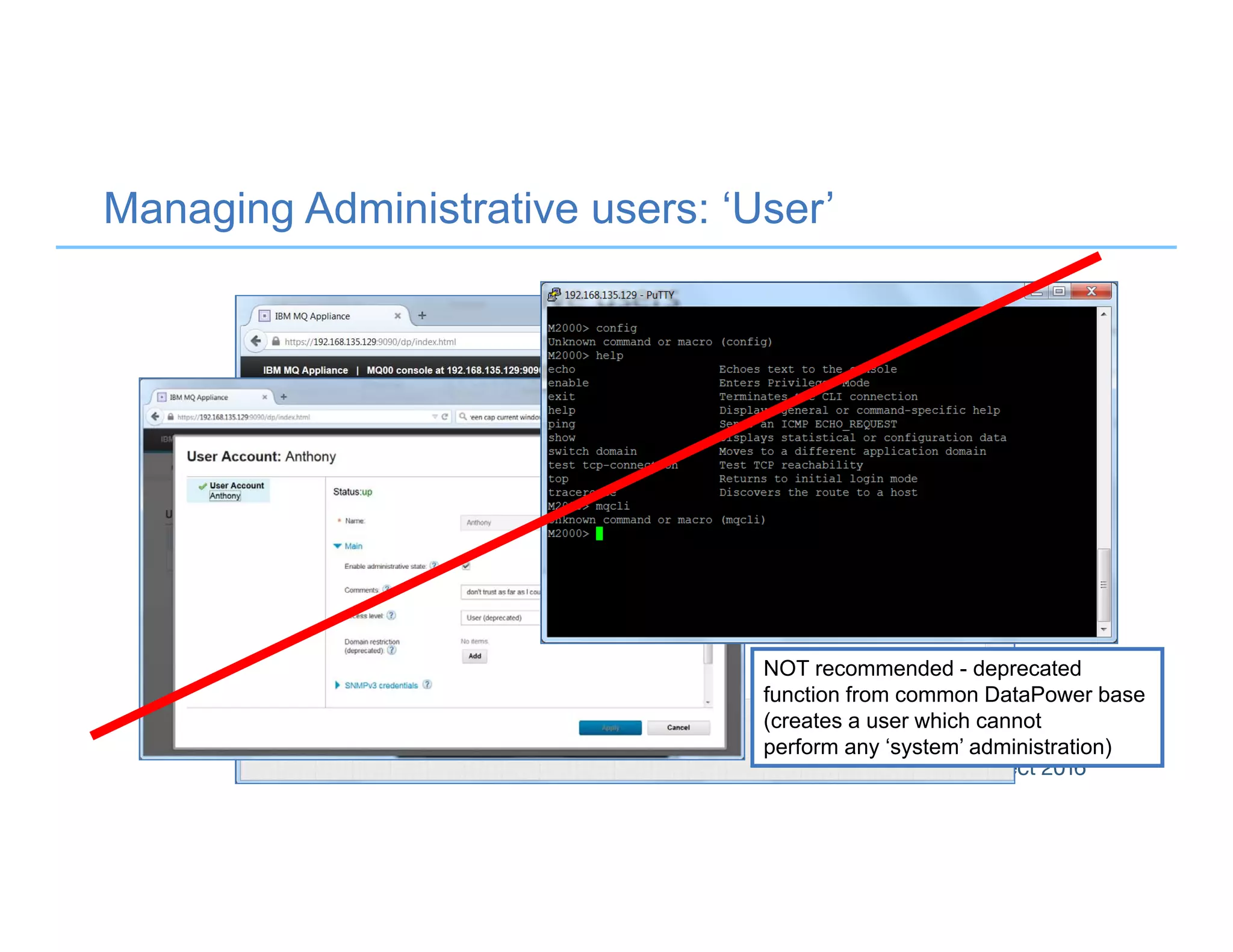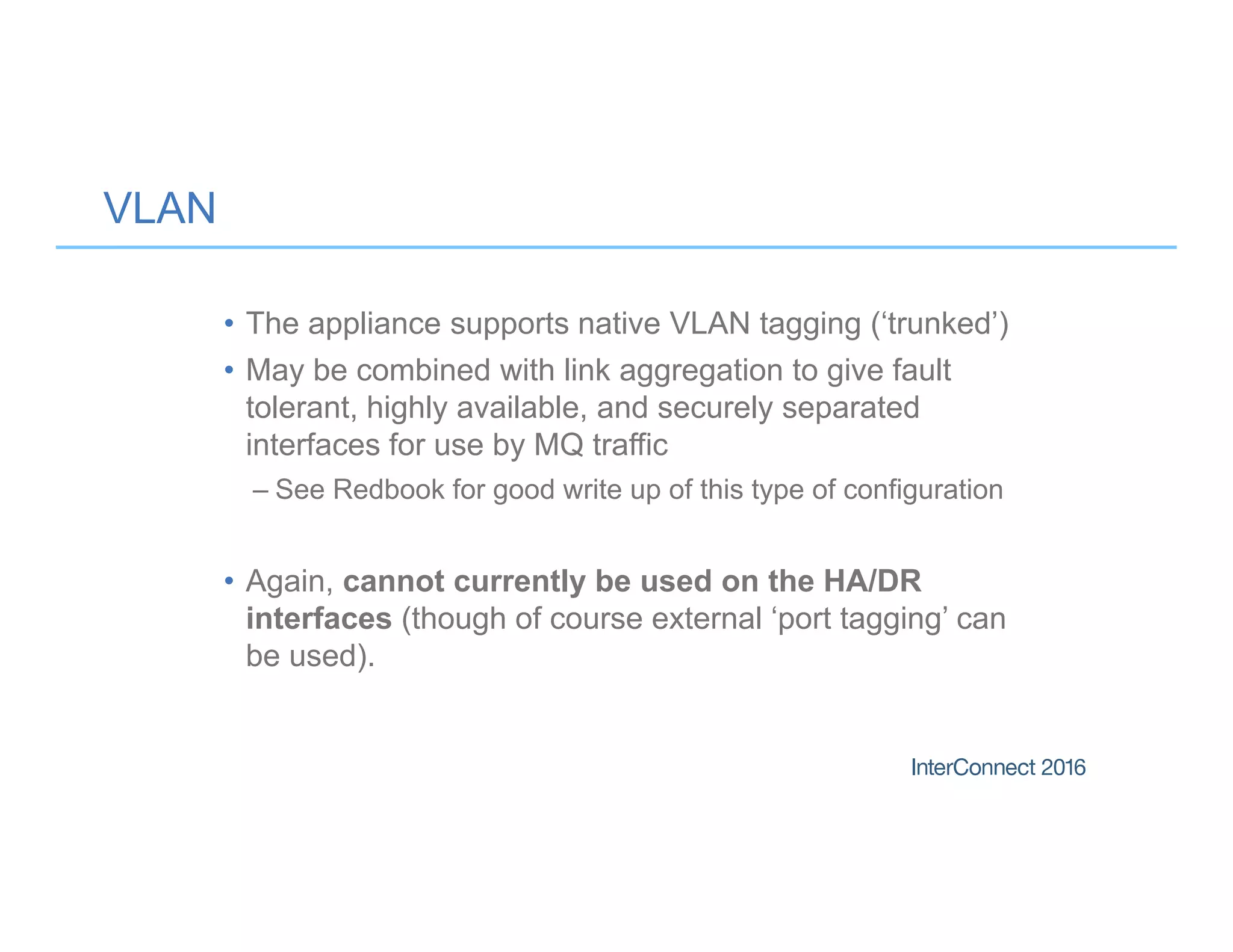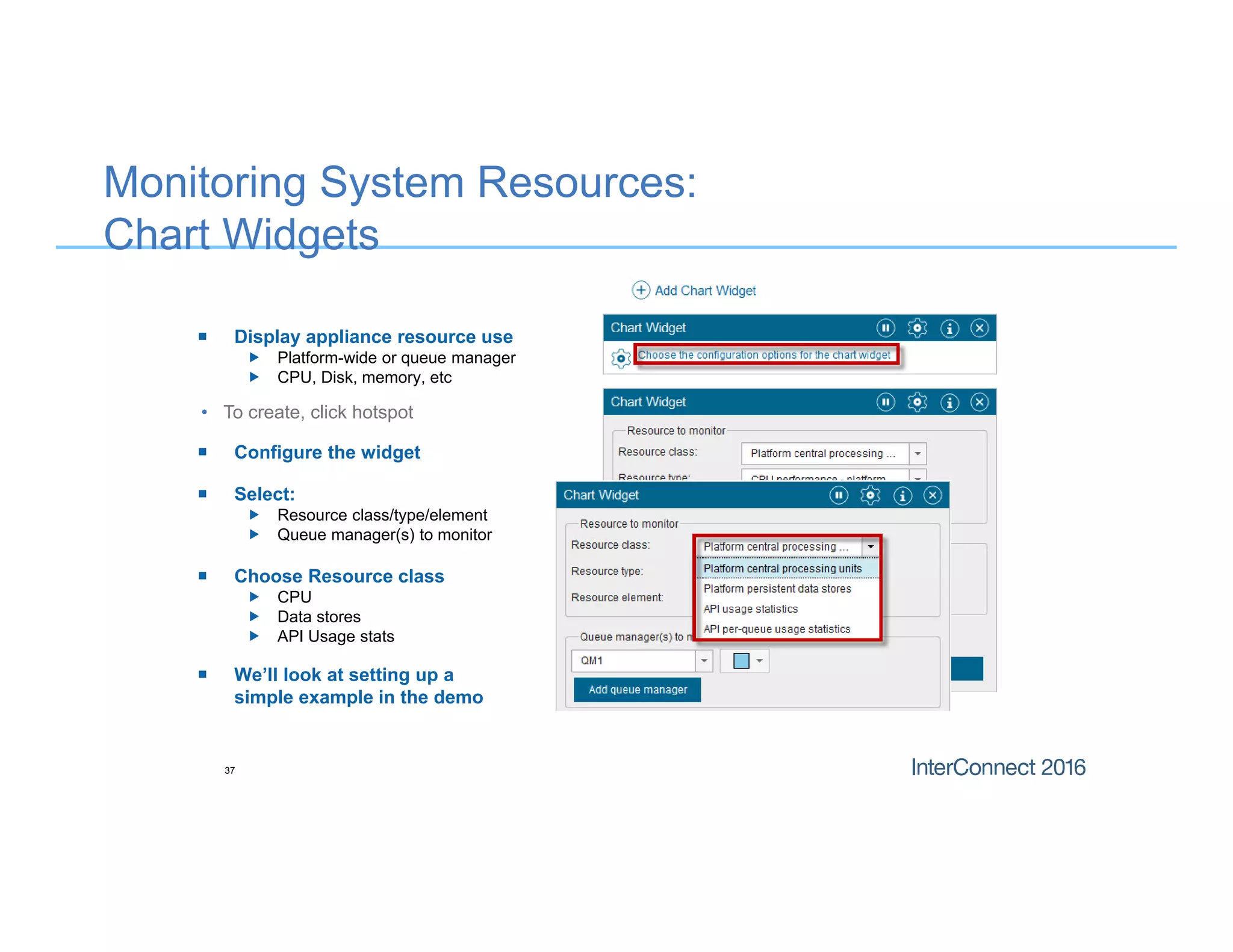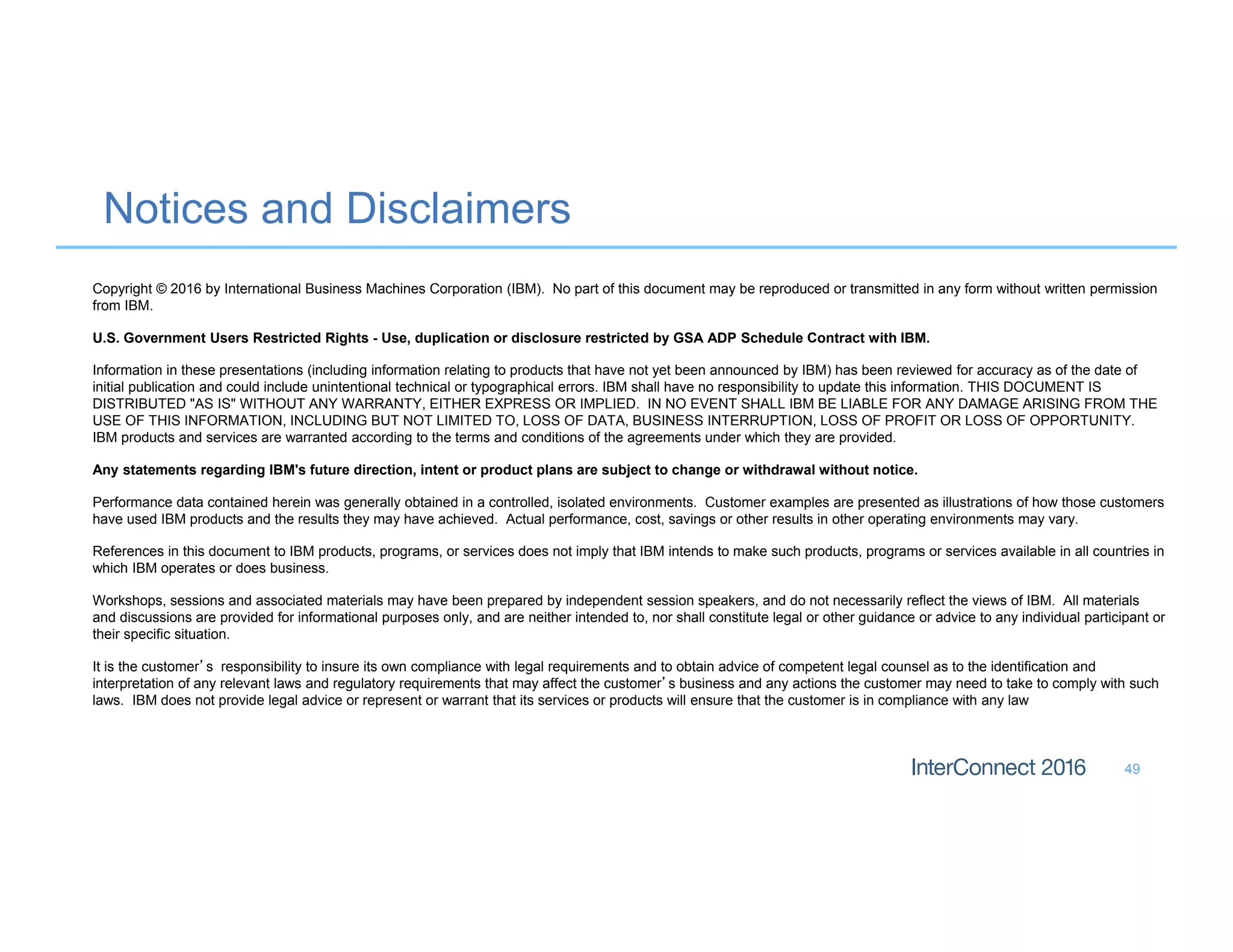The document outlines the IBM MQ Appliance architecture, focusing on administration, configuration, and management tasks including high availability, monitoring, and user management. It details processes for setting up and managing queue managers, utilizing various interfaces, and emphasizes the appliance's features like scalability and low total cost of ownership. Additionally, it discusses advanced configurations such as link aggregation and disaster recovery setups.
